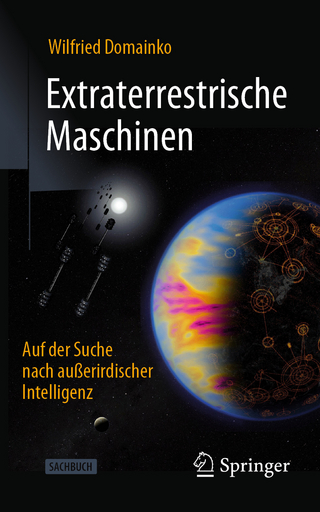The Making of History's Greatest Star Map
Springer Berlin (Verlag)
978-3-642-11601-8 (ISBN)
From prehistoric times, mankind has looked up at the night sky, and puzzled at the changing positions of the stars. How far away they are is a question that has confounded scientists for centuries. Over the last few hundred years, many scientific careers - and considerable resources - have been devoted to measuring their positions and motions with ever increasing accuracy. And in the last two decades of the 20th century, the European Space Agency developed and launched the Hipparcos satellite, around which this account revolves, to carry out these exacting measurements from space.
What has prompted these remarkable developments? Why have governments been persuaded to fund them? What are scientists learning from astronomy's equivalent of the Human Genome Project? This book traces the subject's history, explains why such enormous efforts are considered worthwhile, and interweaves these with a first-hand insight into the Hipparcos project, and how big science is conducted at an international level. The involvement of amateur astronomers, and the Hipparcos contributions to climate research, 'death stars' passing close to the Sun, and the search for extra-solar planets and even intelligent life itself, are some of the surprising facets of this unusual space mission.
Michael Perryman has spent a career in space science focused on Europe's ambitious programme to map the stars. For his scientific leadership of the Hipparcos project, the first star mapping programme carried out from space and the greatest leap in accuracy in history, he was awarded the Prix Janssen of the French Astronomical Society in 1996, and the Academic Medal of the Royal Netherlands Academy of Arts and Sciences in 1999.
Prologue: Hipparcos Launch.- Our Place in the Cosmos.- Why Star Positions?.- Early History.- Developments 1850-1980.- The Push to Space.- From Concept to Launch.- Disaster Unfolds.- Mission Recovery.- Science in the Making.- The Finishing Touches.- Our Galaxy.- Inside the Stars.- Our Solar System and Habitability.- The Future.- Epilogue.
From the reviews:
"This book tells the whole story. Michael Perryman, who has been involved with the project, is uniquely qualified to write it. He has done so very well indeed; his style is both attractive and immensely informative. There are 'snapshot' pictures ... and diagrams where necessary. ... This is a really important book that should be in every scientific library." (Patrick Moore, Sky at Night Magazine, September, 2010)
"This beautiful oevre is a lot of things at once: a really thrilling narrative, a first-class popular science book, a treasure chest for future science historians, an introduction into the inner workings of huge scientific space projects, a deep view into the psychology and socialogy of such projects, and - last but not least - a proof that the often undervalued English language can be beautiful even in science contexts. In large parts Perryman's work is as thrilling and as entertaining as the Watson and Crick novel about the deciphering of the DNA structure. For me personally, its most eminent aspects are Perryman's beautiful and imaginative usage of the English language, and his many pretty ideas how to explain complex matters in simple terms." (extracted and translated from Ulrich Bastian, Sterne und Weltraum, October 2010, p110)
"This book's title accurately describes the achievement of the Hipparcos satellite, which the European Space Agency (ESA) operated between 1989 and 1993. ... the book gives an excellent overview of the engineering and scientific achievements of Hipparcos as well as the individual contributions made by key team members. Summing Up: Recommended. All levels/libraries." (T. Barker, Choice, Vol. 48 (5), January, 2011)
"Perryman's narrative could have been dry and mathematical, but it's not. It is all about human struggles, agency politics, rivalries, staggering odds, and ultimate triumph." (Roger W. Sinnott, Cloudy Nights Telescope Reviews,04/21/11)
"The book's scientific and historical content is substantial and wide ranging. To its credit, the publisher has included about a hundred, mostly small, photographs. A page is devoted to an image of one page of the printed Hipparcos catalog, the one containing data about Sirius, the brightest star in our visible sky." (Jay M. Pasachoff, Physics Today, May, 2011)
| Erscheint lt. Verlag | 1.4.2010 |
|---|---|
| Reihe/Serie | Astronomers' Universe |
| Zusatzinfo | XI, 282 p. |
| Verlagsort | Berlin |
| Sprache | englisch |
| Maße | 155 x 235 mm |
| Gewicht | 630 g |
| Themenwelt | Naturwissenschaften ► Physik / Astronomie ► Astronomie / Astrophysik |
| Schlagworte | Amateur astronomers in science • Astrometry explained • Astronomical satellite missions • Astronomy • Big science projects • climate research • "Death Stars" • extra-solar planets • Galaxy • Himmelskarten • Hipparcos satellite • Star • Star map • Stellar |
| ISBN-10 | 3-642-11601-9 / 3642116019 |
| ISBN-13 | 978-3-642-11601-8 / 9783642116018 |
| Zustand | Neuware |
| Informationen gemäß Produktsicherheitsverordnung (GPSR) | |
| Haben Sie eine Frage zum Produkt? |
aus dem Bereich




